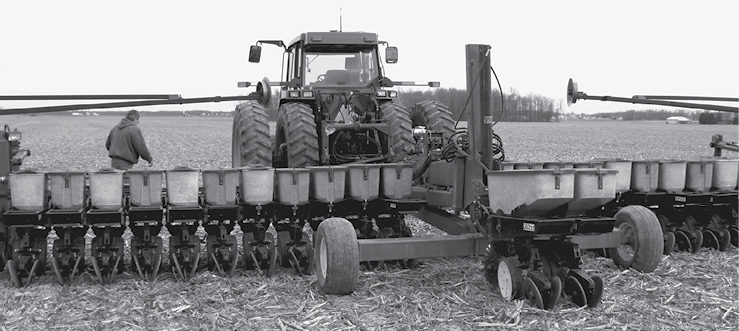No-Till Farmer
Get full access NOW to the most comprehensive, powerful and easy-to-use online resource for no-tillage practices. Just one good idea will pay for your subscription hundreds of times over.

NAME: Jerry Eitle Location: Attica, Ohio
YEARS OF NO-TILLING: 27
ACRES NO-TILLED: 900
NO-TILLED CROPS: Corn, soybeans and wheat.
I FARM ON the edge of the old lakebed region of northwestern Ohio. And while our land is flat (0% to 2% slope), we see a lot of variation that can affect nutrient management, erosion control and final yield.
On one 60-acre field, we identified seven distinct soil types ranging from tight yellow clay to sandy loam. This variation has led us to a system of continuous no-till teamed with variable-rate fertilizer application and seeding, enabled by a farmer-owned GPS RTK precision-guidance network.
Being able to fertilize, plant and spray with 1-inch repeatability, thanks to RTK signals, is a far cry from our first reduced-tillage efforts that date back nearly 30 years.
When my dad and uncles first evolved from moldboard plowing to chisel plows, they saw improvement in moisture retention and residue cover. (The farms were separate entities, but we shared farm equipment and worked together at planting and harvest.)
But after generations of aggressive tillage, they were still bringing up heavy yellow, low-organic-matter soils.
A neighbor subsequently bought a new Allis Chalmers no-till planter. That was the start of a serious shift in our farming methods. He was really impressed when he no-tilled corn directly into a clover field and got good yields with no serious insect damage.
Weed-control technology was not very far along at that time. Paraquat was the only burndown chemical we had.
…